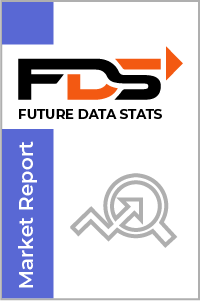The global Digital Financial Planning Tools Market size was valued at USD 5.2 Billion in 2024 and is projected to expand at a compound annual growth rate (CAGR) of 15% during the forecast period, reaching a value of USD 15 Billion by 2032.
The "Digital Financial Planning Tools Market Research Report" by Future Data Stats provides an in-depth examination of the market landscape, utilizing historical data from 2021 to 2023 to identify key trends and growth patterns. Setting 2024 as the foundational year, the report explores consumer behavior, competitive forces, and regulatory frameworks that influence the industry. It transcends basic analysis, delivering a thoroughly researched forecast extending from 2025 to 2033. By employing sophisticated data analysis methodologies, the report not only outlines the market's growth trajectory but also uncovers emerging opportunities and foresees potential obstacles, empowering stakeholders with vital insights to adeptly navigate the changing market landscape.
MARKET OVERVIEW:
The Digital Financial Planning Tools Market focuses on platforms and software that help users manage their financial goals, budgets, and investments through digital means. These tools support financial advisors, institutions, and individuals by simplifying complex planning tasks, enabling better decision-making, and offering real-time financial insights through accessible interfaces. Companies use these tools to improve service efficiency, reduce manual errors, and deliver personalized financial advice. As demand for transparency and self-service grows, the market continues to expand with innovations that integrate automation, analytics, and mobile accessibility.
MARKET DYNAMICS:
The latest trends in the Digital Financial Planning Tools Market reveal a growing demand for AI-powered features that enhance personalization and decision-making. Users increasingly prefer tools that integrate machine learning to offer tailored financial strategies based on real-time data. Mobile-first platforms are also gaining popularity as consumers seek flexibility and instant access to their financial plans from any location, reflecting the broader shift toward on-the-go digital solutions. Looking ahead, upcoming trends include the expansion of blockchain technology to improve security and transparency in financial transactions. Additionally, as sustainability becomes a priority for investors, digital tools are beginning to integrate eco-friendly investment options. The business scope of this market is broadening, as both traditional financial institutions and fintech startups seize opportunities to deliver innovative solutions that meet the evolving needs of consumers and businesses alike.
Increasing adoption of smartphones and internet access empowers individuals to take control of their financial lives, fueling demand for user-friendly planning applications. Furthermore, growing awareness of the importance of financial literacy and the need for personalized advice drives the market as people seek accessible and affordable solutions. The rise of fintech companies offering innovative and disruptive financial planning services also contributes significantly to market growth. However, the market faces certain restraints. Concerns surrounding data security and privacy can hinder adoption, particularly among more cautious consumers. The complexity of financial planning concepts and the potential for algorithmic bias in automated tools present challenges. Despite these obstacles, the market holds vast opportunities. The increasing demand for robo-advisors, the integration of AI and machine learning to enhance planning capabilities, and the expansion into emerging markets all promise substantial growth potential.
DIGITAL FINANCIAL PLANNING TOOLS MARKET SEGMENTATION ANALYSIS
BY TYPE:
Goal-based financial planning tools dominate this segment due to their user-centric approach, which aligns financial strategies with individual life goals. These tools allow users to prioritize savings and investments based on milestones like buying a home, education, or retirement, making them especially attractive to younger users and financial advisors seeking personalized solutions. Cash flow-based tools maintain strong relevance, especially among businesses and high-net-worth individuals who require continuous monitoring of income and expenses. Their dominance arises from their ability to offer real-time tracking, which supports effective liquidity management and short-term decision-making.
Hybrid financial planning tools, combining goal-based and cash flow models, are quickly gaining traction. Users benefit from a comprehensive view of both long-term objectives and current cash flow, which positions hybrid tools as a preferred option for advisors managing diverse portfolios. This blend of functionality ensures that hybrid tools remain a strong contender in the evolving financial landscape.
BY DEPLOYMENT MODE:
Cloud-based deployment leads this segment, driven by its scalability, lower upfront costs, and ease of access across devices. Financial institutions favor cloud platforms because they support real-time collaboration and automatic updates, streamlining client management and compliance efforts. On-premise solutions continue to serve clients who prioritize data security and system control. Large financial institutions, in particular, rely on these tools when handling sensitive client information or when regulations restrict cloud usage. Their performance stability and integration flexibility maintain their relevance despite the growing shift to the cloud.
The dominance of cloud-based solutions is likely to strengthen as cybersecurity improves and firms seek agility in remote and hybrid work environments. However, the on-premise model retains a niche role in highly regulated or risk-averse segments of the financial industry.
BY ENTERPRISE SIZE:
Small and medium enterprises (SMEs) actively adopt digital financial planning tools to enhance operational efficiency and financial visibility. With limited in-house expertise, SMEs often rely on user-friendly, cost-effective digital tools to manage cash flow, plan taxes, and track goals without hiring full-time advisors. Large enterprises leverage these tools for complex planning across departments and geographies. They benefit from advanced analytics and integration with broader enterprise systems, enabling precise forecasting and investment planning. Large firms also drive demand for customizable features and multi-user access.
While both segments contribute to market growth, SMEs show greater adoption potential due to rising digitalization initiatives and lower-cost cloud-based solutions. Their increasing reliance on fintech platforms continues to shift market momentum in favor of smaller organizations embracing digital planning.
BY END USER:
Financial advisors form a dominant user group by integrating digital tools into their workflows to deliver tailored planning services. These tools help them enhance client engagement, automate routine tasks, and provide data-driven insights for informed decision-making. Wealth management firms and banks increasingly embed these platforms into their services to expand reach and improve client retention. Digital planning tools enable them to offer scalable advisory services without sacrificing personalization, making them critical in a competitive landscape.
Individual consumers and robo-advisors drive self-directed financial planning growth. Consumers seek easy-to-use tools that promote financial independence, while robo-advisors rely on algorithms and automated systems to deliver planning at scale. These users highlight the growing shift toward digital-first, low-touch financial solutions.
BY PLATFORM:
Web-based platforms lead the market with their accessibility and cross-device functionality. Users benefit from seamless logins across systems, while financial firms use web platforms to maintain centralized data and ensure consistent user experiences. Mobile-based platforms have surged in popularity due to widespread smartphone adoption and on-the-go financial management needs. These platforms appeal to younger consumers and professionals who demand real-time alerts and app-based convenience for budgeting and planning.
Desktop-based platforms still hold value among traditional users and enterprise environments requiring robust, feature-heavy tools. Their dominance is waning, but they remain relevant where deep integrations and offline functionality are necessary, particularly in secure or high-control settings.
BY APPLICATION:
Retirement planning remains a core application, with users prioritizing long-term financial security. Digital tools simplify retirement forecasts, simulate savings scenarios, and align investments with post-retirement goals, making them essential for both advisors and individuals. Investment and tax planning tools follow closely, supporting efficient portfolio management and regulatory compliance. Users turn to these applications for automated insights on risk tolerance, tax strategies, and asset allocations, boosting demand in both personal and institutional finance.
Applications such as estate planning, insurance planning, and budgeting also play crucial roles. These tools help users organize wealth transfer, manage risk exposure, and control spending habits. The holistic nature of these applications ensures consistent demand across diverse user segments.
REGIONAL ANALYSIS:
The Digital Financial Planning Tools Market in North America continues to lead due to the region's advanced financial infrastructure and high consumer adoption of digital tools. With a strong presence of fintech startups and established financial institutions, North America benefits from the integration of cutting-edge technologies like AI and machine learning. The demand for personalized, data-driven financial solutions is driving market growth, especially as millennials and Gen Z increasingly seek online platforms to manage their finances.
In Europe, the market is expanding as digital tools gain traction among wealth management firms and financial advisors seeking to streamline their services. Regulatory support, particularly with GDPR compliance, is shaping the adoption of secure, cloud-based financial planning tools. Asia Pacific is experiencing rapid growth, fueled by rising middle-class populations and increasing smartphone penetration, which makes financial tools more accessible. Meanwhile, Latin America and the Middle East & Africa are emerging markets, with expanding access to digital finance services, although challenges like financial literacy and regulatory barriers may slow down the pace of growth in these regions.
MERGERS & ACQUISITIONS:
- In Jan 2024: Fidelity Investments acquired a fintech startup specializing in AI-driven financial planning tools.
- In Feb 2024: Intuit (TurboTax) expanded its digital financial planning features through a strategic partnership with a robo-advisory firm.
- In Mar 2024: BlackRock acquired a digital wealth management platform to enhance its Aladdin Wealth ecosystem.
- In Apr 2024: Morgan Stanley integrated AI-powered financial planning tools into its Wealth Management platform.
- In May 2024: Betterment acquired a competitor in the automated financial planning space to expand its user base.
- In Jun 2024: Charles Schwab launched a new AI-based financial planning tool for retail investors.
- In Jul 2024: Goldman Sachs merged its digital advisory services with a leading fintech firm to strengthen its Marcus platform.
- In Aug 2024: SoFi acquired a budgeting app to enhance its all-in-one financial planning ecosystem.
- In Sep 2024: Vanguard introduced AI-driven personalized financial planning for its ETF investors.
- In Oct 2024: JPMorgan Chase acquired a European digital financial planning startup to expand its global footprint.
- In Nov 2024: Robinhood integrated advanced financial planning tools into its trading app.
- In Dec 2024: Wealthfront announced a merger with a competing robo-advisor to consolidate market share.
KEY MARKET PLAYERS:
- Betterment
- Wealthfront
- Personal Capital (Empower)
- Mint (by Intuit)
- Charles Schwab Intelligent Portfolios
- Fidelity Go
- Vanguard Digital Advisor
- SoFi Automated Investing
- Ellevest
- Acorns
- Robinhood Retirement
- Morgan Stanley E*TRADE Core Portfolios
- Ally Invest Managed Portfolios
- SigFig
- FutureAdvisor (by BlackRock)
- Wealthsimple
- Blooom
- Rowe Price ActivePlus Portfolios
- Schwab Robo-Advisor
- Marcus Invest (by Goldman Sachs)
Digital Financial Planning Tools Market: Table of Contents
Executive Summary
Market Introduction
Research Methodology
Market Dynamics
- Drivers
- Restraints
- Opportunities
- Challenges
Impact of Macroeconomic Factors
Digital Financial Planning Tools Market Overview
Market Segmentation
- By Type
- By Deployment Mode
- By Enterprise Size
- By End User
- By Platform
- By Application
Competitive Landscape
- Market Share Analysis
- Key Player Profiles
- Recent Developments
Strategic Recommendations
Appendix
List of Abbreviations
References
Digital Financial Planning Tools Market Segmentation
By Type:
- Goal-Based Financial Planning Tools
- Cash Flow-Based Financial Planning Tools
- Hybrid Financial Planning Tools
By Deployment Mode:
- Cloud-Based
- On-Premise
By Enterprise Size:
- Small and Medium Enterprises (SMEs)
- Large Enterprises
By End User:
- Financial Advisors
- Wealth Management Firms
- Banks and Credit Unions
- Individual Consumers
- Robo-Advisors
By Platform:
- Web-Based
- Mobile-Based
- Desktop-Based
By Application:
- Retirement Planning
- Investment Planning
- Tax Planning
- Estate Planning
- Insurance Planning
- Budgeting and Expense Tracking
By Geography:
- North America (USA, Canada, Mexico)
- Europe (UK, Germany, France, Italy, Spain, Rest of Europe)
- Asia-Pacific (China, Japan, Australia, South Korea, India, Rest of Asia-Pacific)
- South America (Brazil, Argentina, Rest of South America)
- Middle East and Africa (GCC Countries, South Africa, Rest of MEA)
WHY SHOULD YOU INVEST IN A MARKET RESEARCH REPORT?
Smarter Business Decisions:
A high-quality market research report delivers valuable insights into industry trends, customer preferences, and competitor strategies. With solid data guiding your choices, you can minimize risks and confidently pursue new opportunities—whether launching a product or expanding into new markets.
Spot Hidden Opportunities:
Market research uncovers unmet customer needs and emerging trends before they become mainstream. By aligning your products or services with these opportunities, you can stay ahead of the competition and capture untapped demand.
Know Your Competition Inside Out:
Gain a clear picture of your competitors' strengths, weaknesses, and strategies. This knowledge helps you refine your unique selling points, craft stronger positioning, and outmaneuver rivals effectively.
Sharper, More Effective Marketing:
Understanding your audience is key to successful marketing. Market research reveals who your customers are, what drives their decisions, and how they engage with brands. With these insights, you can create tailored campaigns that deliver better results and higher ROI.
Reduce Risks Before They Arise:
Every business move carries some risk—but research helps you anticipate challenges before they become costly. By analyzing market conditions and potential obstacles, you can make proactive adjustments to protect your bottom line and reputation.
Strengthen Your Case for Funding:
Investors and lenders want proof of market potential before backing a business. A well-researched report provides the data-driven evidence they need, boosting your credibility and increasing your chances of securing capital.
Stay Ahead of Industry Shifts:
Markets evolve fast, with new technologies, regulations, and consumer behaviors constantly reshaping the landscape. Regular market research ensures you stay informed, adapt quickly, and maintain a competitive edge in your industry.
RESEARCH METHODOLOGY AT FUTURE DATA STATS
At Future Data Stats, we combine decades of industry expertise with cutting-edge research techniques to deliver unparalleled market intelligence. Our team of seasoned analysts employs a dynamic, data-driven approach to uncover actionable insights, helping businesses navigate complex market landscapes with confidence.
Comprehensive & Cutting-Edge Market Analysis
We go beyond surface-level trends to provide a 360-degree view of market dynamics. Our research methodology is designed to:
✔ Accurately assess market size, growth patterns, and competitive landscapes.
✔ Identify emerging opportunities through real-time trend analysis and predictive modeling.
✔ Validate findings with high-quality data, expert consultations, and independent verification.
Our insights empower decision-makers with strategic clarity, ensuring they stay ahead in rapidly evolving industries.
Multi-Source Data Collection & Validation
We leverage a diverse mix of primary and secondary research sources, including:
- In-depth stakeholder interviews (industry leaders, suppliers, distributors, and end-users)
- Statistical databases & market reports from authoritative global sources
- Regional market intelligence to capture localized trends and demand shifts
- Proprietary analytical models tailored to specific industry needs
- By cross-verifying data from multiple streams, we ensure maximum accuracy and reliability.
Key Advantages of Our Research Approach
- Actionable Intelligence – Clear, data-backed recommendations for strategic planning.
- Technology-Enhanced Accuracy – Advanced tools for data validation and trend forecasting.
- Unbiased Insights – Independent analysis free from external influence.
Our Two-Tier Research Framework
- Primary Research – Direct Industry Engagement
- Expert Interviews: Over 25+ hours of discussions with key stakeholders across the value chain.
- Targeted Surveys: Structured questionnaires for KOLs (Key Opinion Leaders) to gauge market sentiment.
- Competitive Benchmarking: Assessing leading players to determine market positioning.
- Secondary Research – Extensive Data Synthesis
- Analysis of 3,000+ documents, including industry reports, whitepapers, and regulatory publications.
- Global & regional data mining from government databases, trade journals, and financial reports.
- Macroeconomic & sector-specific trend mapping for long-term forecasting.
Dual Analytical Approach
We employ both top-down and bottom-up methodologies to ensure precision:
- Bottom-Up Analysis: Calculating market size from granular data, ensuring detailed accuracy.
- Top-Down Assessment: Validating findings through macroeconomic indicators and industry benchmarks.
Why Choose Future Data Stats?
✔ 70+ years of collective expertise in market intelligence.
✔ Customized research models for sector-specific accuracy.
✔ Transparent, reliable, and forward-thinking insights.
With Future Data Stats, you don’t just get data—you get a strategic advantage. Partner with us to unlock the full potential of your market decisions.
Digital Financial Planning Tools Market Dynamic Factors
Drivers:
- Financial institutions adopt digital tools to streamline advisory services.
- Consumers demand more accessible and personalized financial planning.
- Fintech innovations push the development of smarter planning platforms.
Restraints:
- Data security concerns limit widespread user adoption.
- High implementation costs deter smaller firms.
- Limited digital literacy restricts use in some user segments.
Opportunities:
- Expanding mobile use opens new channels for financial tools.
- Integration with AI and analytics enhances user experience.
- Emerging markets present new client bases for digital services.
Challenges:
- Rapid tech shifts require constant tool updates.
- Regulatory complexity slows market expansion.
- Market saturation increases competition among providers.
Digital Financial Planning Tools Market Regional Key Trends Analysis
North America:
- Wealth firms integrate AI to personalize digital planning.
- High mobile usage drives demand for app-based solutions.
- Regulatory support accelerates fintech tool growth.
Europe:
- Banks adopt digital platforms to improve client services.
- GDPR compliance shapes data-handling features.
- Robo-advisory tools see growing adoption.
Asia-Pacific:
- Rising middle class fuels demand for financial planning.
- Mobile-first markets boost app-based tool adoption.
- Governments support digital finance initiatives.
Latin America:
- Fintech startups offer low-cost digital planning tools.
- Digital banking adoption rises in urban areas.
- Inflation concerns drive interest in budgeting features.
Middle East & Africa:
- Wealth management firms digitize services for high-net clients.
- Financial literacy programs promote planning tools.
- Smartphone penetration supports digital tool uptake.
Frequently Asked Questions

















